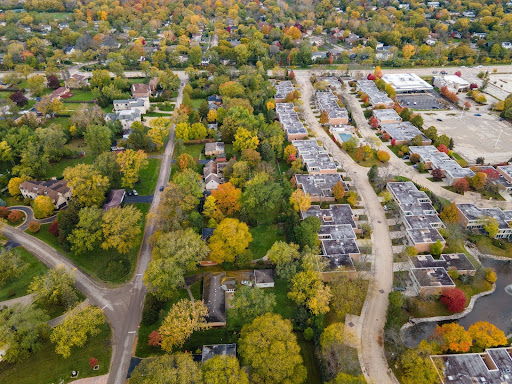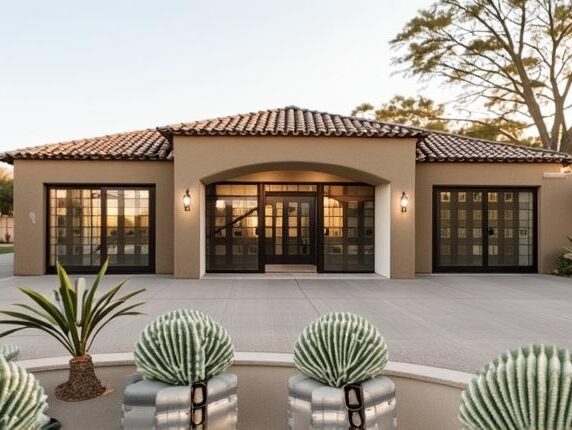Sustainable Construction of ADUs in the Desert Climate
Understanding the unique characteristics of desert climates is essential for successful construction in areas like Tucson, AZ, and its neighboring regions such as Oro Valley, Marana, Sahuarita, and Green Valley. The desert climate is marked by extreme temperatures and arid conditions, presenting specific challenges for construction. Builders must adapt their practices to ensure structures withstand these harsh environments while remaining comfortable and energy-efficient.
Understanding the Desert Climate and Its Challenges
Desert climates, particularly in the Tucson area, are characterized by high temperatures during the day and cooler nights. The low humidity levels can also lead to quick evaporation, affecting building materials and construction methods. These conditions demand that construction practices are tailored to withstand the intense heat and conserve water, a scarce resource in these regions.
Building in such an environment requires careful consideration of materials and design to ensure durability and efficiency. Structures must be designed to minimize heat absorption and maximize cooling, which can be challenging but essential for sustainability and comfort.
Renewable Energy Sources for ADUs
Harnessing renewable energy sources is crucial in desert climates, where sunlight is abundant. Solar power is a particularly effective energy solution in Tucson and surrounding areas. Solar panels can be installed on ADUs (Accessory Dwelling Units) to provide a sustainable and efficient energy source. This not only reduces reliance on non-renewable energy but also lowers utility costs for homeowners.
Numerous successful solar-powered ADUs in Tucson serve as examples of the benefits of solar energy. These projects demonstrate significant energy savings and reduced environmental impact. For more information on the benefits of residential solar electricity, visit [Energy Saver](https://www.energy.gov/energysaver/benefits-residential-solar-electricity).
Sustainable Materials for Desert ADUs
Using sustainable materials is another key aspect of constructing ADUs in desert climates. Materials such as recycled steel, bamboo, and adobe are eco-friendly options that offer durability and energy efficiency. Locally sourced materials also help reduce the carbon footprint associated with transportation.
Innovative materials that provide natural insulation and cooling are increasingly being used in desert construction. These materials help maintain comfortable indoor temperatures while reducing energy consumption. For further insights into sustainable building materials, check out https://www.activesustainability.com/construction-and-urban-development/sustainable-building-materials/.
Water Conservation Techniques
Water conservation is a critical consideration in desert environments. Implementing rainwater harvesting systems in ADUs can significantly reduce water usage. This involves collecting and storing rainwater for later use, which is particularly beneficial in arid regions.
Landscaping with xeriscaping techniques and drought-resistant plants can further enhance water conservation efforts. Additionally, installing water-efficient fixtures and appliances in ADUs can contribute to significant water savings.
Energy-Efficient Design Principles
Designing ADUs with energy efficiency in mind is essential in desert climates. Passive solar design principles, such as strategic window placement and shading, can maximize natural light and heat, reducing the need for artificial lighting and heating.
Incorporating thermal mass and reflective roofing can also help manage indoor temperatures, reducing the reliance on air conditioning. Proper ventilation is another crucial aspect, ensuring that buildings remain cool during the hottest parts of the day.
Cultural and Geographical Considerations
The architecture of the Southwestern United States heavily influences sustainable building practices in Tucson and its surrounding areas. Local cultural preferences often shape the design and construction of ADUs, incorporating traditional techniques that are well-suited to the desert environment.
For instance, adobe construction, a traditional building method in the region, offers excellent insulation properties and is highly sustainable. By adapting these techniques to modern sustainability standards, builders can create structures that honor cultural heritage while meeting contemporary environmental goals.
The Economic Benefits of Sustainable ADUs
Investing in sustainable ADUs offers numerous economic benefits. Homeowners can enjoy long-term cost savings through reduced energy and water bills. Additionally, eco-friendly homes often have increased property value and greater market appeal.
In Arizona, there are potential incentives and rebates available for sustainable construction, further enhancing the financial benefits of building green. These incentives can offset the initial investment costs, making sustainable construction more accessible.
Future Trends in Sustainable ADU Construction
As technology advances, new trends in sustainable ADU construction are emerging. Innovations such as smart home systems and advanced insulation materials are becoming more prevalent. These technologies promise to further reduce energy consumption and enhance the sustainability of ADUs.
The ADU market in desert regions is expected to evolve, with an increasing focus on sustainability and energy efficiency. Community and government initiatives play a vital role in promoting sustainable construction, encouraging collaboration between builders, homeowners, and local authorities.
In conclusion, constructing sustainable ADUs in desert climates like Tucson requires a comprehensive understanding of the unique challenges and opportunities presented by the environment. By leveraging renewable energy, sustainable materials, and energy-efficient design principles, builders can create structures that are not only environmentally friendly but also economically beneficial for homeowners.


